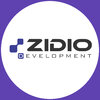Filter interviews by
Xetech Interview Questions and Answers
29 Interview questions
Clustered index physically reorders the data in the table while non-clustered index creates a separate structure.
Clustered index determines the physical order of data in the table, while non-clustered index does not.
A table can have only one clustered index but multiple non-clustered indexes.
Clustered index is faster for retrieval of data but slower for insert and update operations.
Non-clustered index is slower fo...
I have 3 years of experience as an ASP Core Web API and ReactJs Developer.
3 years of experience in ASP Core Web API development
Proficient in ReactJs development
Developed multiple projects using ASP Core Web API and ReactJs
States are mutable data managed within a component, while Props are immutable data passed from parent to child components.
States are managed within a component and can be changed by the component itself
Props are passed from parent to child components and cannot be changed by the child component
States are used for internal component data management, while Props are used for passing data from parent to child compone...
Context API is a built-in feature in React for managing global state, while Redux is a standalone library for state management.
Context API is built into React, while Redux is a separate library.
Context API is primarily used for managing global state in a React application.
Redux provides a centralized store for managing state across the application.
Context API is simpler to use for smaller applications, while Redux...
Optimizing SQL queries involves using indexes, minimizing data retrieval, and avoiding unnecessary joins.
Use indexes on columns frequently used in WHERE clauses
Minimize data retrieval by selecting only necessary columns
Avoid unnecessary joins by using EXISTS or IN clauses instead of JOINs
Views are virtual tables, procedures are reusable code blocks, functions return values
Views are virtual tables that display data from one or more tables
Procedures are reusable code blocks that can be called multiple times
Functions return a single value based on input parameters
Views are read-only, while procedures and functions can modify data
Examples: View - SELECT * FROM employees_view; Procedure - EXECUTE get_e...
Code First: Develop database from code. Database First: Generate code from existing database.
Code First: Focus on code design and then generate database schema.
Database First: Focus on existing database schema and generate code classes.
Code First: More control over database design and relationships.
Database First: Faster development for existing databases.
Code First: Entity Framework Code First approach.
Database F...
To connect SQL to ASP Core Web API, you need to configure a database connection in the API project.
Configure a connection string in the appsettings.json file of the API project.
Install Entity Framework Core package in the API project.
Create a DbContext class that inherits from DbContext and represents the database.
Use dependency injection to inject the DbContext into the API controllers.
LINQ (Language Integrated Query) is a feature in C# that allows for querying data from different data sources using a uniform syntax.
LINQ allows for querying data from collections, databases, XML, and more.
It provides a set of standard query operators like Where, Select, OrderBy, etc.
LINQ queries are written in a declarative syntax similar to SQL.
Example: var result = from num in numbers where num % 2 == 0 select ...
Use indexing, limit the columns retrieved, optimize queries, use pagination
Create indexes on columns frequently used in queries
Limit the columns retrieved to only those needed
Optimize queries by using WHERE clauses and avoiding SELECT *
Implement pagination to retrieve records in smaller chunks
Xetech Interview Experiences
6 interviews found
(2 Questions)
- Q1. About lead generation experience
- Q2. Lead generation queries
(1 Question)
- Q1. What is clustered and non clustered index in SQL
- Ans.
Clustered index physically reorders the data in the table while non-clustered index creates a separate structure.
Clustered index determines the physical order of data in the table, while non-clustered index does not.
A table can have only one clustered index but multiple non-clustered indexes.
Clustered index is faster for retrieval of data but slower for insert and update operations.
Non-clustered index is slower for ret...
Skills evaluated in this interview

(1 Question)
- Q1. Redux in react native and saga
- Ans.
Redux is a state management tool for React Native, while Saga is a middleware for handling side effects.
Redux is used to manage the state of the application in a predictable way.
Saga is used to handle side effects like asynchronous calls and impure functions.
Redux and Saga are often used together in React Native applications to manage state and side effects efficiently.
Skills evaluated in this interview
I applied via Indeed and was interviewed before Jul 2022. There were 3 interview rounds.

(17 Questions)
- Q1. What is ASP Dot Net Core?
- Ans.
ASP.NET Core is a cross-platform, high-performance framework for building modern, cloud-based, internet-connected applications.
Cross-platform framework for building web applications
High-performance and scalable
Supports cloud-based and internet-connected applications
Open-source and actively maintained by Microsoft
Modular design for flexibility and extensibility
- Q2. What are the key features of ASP Dot Net CORE?
- Ans.
Key features of ASP Dot Net CORE include cross-platform support, high performance, and modularity.
Cross-platform support allows developers to build and run applications on Windows, macOS, and Linux.
High performance achieved through features like a new lightweight and modular HTTP request pipeline.
Modularity enables developers to include only the necessary components in their applications, reducing the overall size and ...
- Q3. Explain the Use of Entity Framework Core
- Ans.
Entity Framework Core is an ORM framework that allows developers to work with databases using .NET applications.
Entity Framework Core is an Object-Relational Mapping (ORM) framework for .NET applications.
It allows developers to work with databases using .NET objects and LINQ queries.
EF Core supports various database providers such as SQL Server, SQLite, MySQL, etc.
It simplifies data access and persistence by handling d...
- Q4. Write an SQL Query to remove duplicate records
- Ans.
Use the DISTINCT keyword in an SQL query to remove duplicate records.
Use the SELECT DISTINCT statement to retrieve unique records.
Identify the columns that should be used to determine uniqueness.
Consider using GROUP BY clause with aggregate functions if needed.
- Q5. What are the Differences between Joins and Sub Queries
- Ans.
Joins are used to combine rows from two or more tables based on a related column, while subqueries are nested queries used to return data for the main query.
Joins are used to retrieve data from multiple tables based on a related column
Subqueries are nested queries within a main query to return data for the main query
Joins are typically more efficient than subqueries for large datasets
Joins can be of different types lik...
- Q6. What are the Differences between Views, Procedures, and Functions
- Ans.
Views are virtual tables, procedures are reusable code blocks, functions return values
Views are virtual tables that display data from one or more tables
Procedures are reusable code blocks that can be called multiple times
Functions return a single value based on input parameters
Views are read-only, while procedures and functions can modify data
Examples: View - SELECT * FROM employees_view; Procedure - EXECUTE get_employ...
- Q7. Difference between the Code First and Database First Approach
- Ans.
Code First: Develop database from code. Database First: Generate code from existing database.
Code First: Focus on code design and then generate database schema.
Database First: Focus on existing database schema and generate code classes.
Code First: More control over database design and relationships.
Database First: Faster development for existing databases.
Code First: Entity Framework Code First approach.
Database First:...
- Q8. How to connect SQL to ASP Core Web API
- Ans.
To connect SQL to ASP Core Web API, you need to configure a database connection in the API project.
Configure a connection string in the appsettings.json file of the API project.
Install Entity Framework Core package in the API project.
Create a DbContext class that inherits from DbContext and represents the database.
Use dependency injection to inject the DbContext into the API controllers.
- Q9. What is Dependency Injection and how to achieve it
- Ans.
Dependency Injection is a design pattern where the dependencies of an object are provided externally rather than created within the object itself.
Dependencies are injected into a class through constructor injection, setter injection, or interface injection.
This helps in achieving loose coupling between classes and makes the code more testable and maintainable.
Example: Instead of creating an instance of a dependency wit...
- Q10. Explain the use of LINQ in C#
- Ans.
LINQ (Language Integrated Query) is a feature in C# that allows for querying data from different data sources using a uniform syntax.
LINQ allows for querying data from collections, databases, XML, and more.
It provides a set of standard query operators like Where, Select, OrderBy, etc.
LINQ queries are written in a declarative syntax similar to SQL.
Example: var result = from num in numbers where num % 2 == 0 select num;
- Q11. Can you explain the steps to enable JWT Authentication in ASP Core Web API with Roles?
- Ans.
Enable JWT Authentication in ASP Core Web API with Roles
Install the required NuGet packages like Microsoft.AspNetCore.Authentication.JwtBearer
Configure JWT authentication in Startup.cs file
Add authentication middleware in Configure method
Implement role-based authorization using policies and attributes
- Q12. Explain different ways to optimize SQL Queries
- Ans.
Optimizing SQL queries involves using indexes, minimizing data retrieval, and avoiding unnecessary joins.
Use indexes on columns frequently used in WHERE clauses
Minimize data retrieval by selecting only necessary columns
Avoid unnecessary joins by using EXISTS or IN clauses instead of JOINs
- Q13. How to efficiently retrieve SQL records in case a table has millions of records
- Ans.
Use indexing, limit the columns retrieved, optimize queries, use pagination
Create indexes on columns frequently used in queries
Limit the columns retrieved to only those needed
Optimize queries by using WHERE clauses and avoiding SELECT *
Implement pagination to retrieve records in smaller chunks
- Q14. Explain the use and types of Indexing in SQL
- Ans.
Indexing in SQL is used to improve the performance of queries by creating a data structure that allows for faster retrieval of data.
Types of indexing include clustered and non-clustered indexes
Clustered indexes physically order the data in the table based on the index key
Non-clustered indexes create a separate data structure that includes the indexed columns and a pointer to the actual data
Indexes can be created on sin...
- Q15. How much experience do have as ASP Core Web API and ReactJs Developer?
- Ans.
I have 3 years of experience as an ASP Core Web API and ReactJs Developer.
3 years of experience in ASP Core Web API development
Proficient in ReactJs development
Developed multiple projects using ASP Core Web API and ReactJs
- Q16. Explain the difference between States and Props
- Ans.
States are mutable data managed within a component, while Props are immutable data passed from parent to child components.
States are managed within a component and can be changed by the component itself
Props are passed from parent to child components and cannot be changed by the child component
States are used for internal component data management, while Props are used for passing data from parent to child components
- Q17. What is the difference between Context API and Redux?
- Ans.
Context API is a built-in feature in React for managing global state, while Redux is a standalone library for state management.
Context API is built into React, while Redux is a separate library.
Context API is primarily used for managing global state in a React application.
Redux provides a centralized store for managing state across the application.
Context API is simpler to use for smaller applications, while Redux is m...
(1 Question)
- Q1. Your interview was great, what is your expected CTC
Interview Preparation Tips
- React.Js
- C#
- dot net core
- SQL
Skills evaluated in this interview
I applied via Approached by Company and was interviewed in Dec 2021. There were 3 interview rounds.

(4 Questions)
- Q1. Introduce yourself in brief.
- Q2. Tell me about your internship (as you mentioned in your resume) in detail.
- Q3. Can you comfortable to relocate here?
- Q4. What is your salary expectations?
(9 Questions)
- Q1. What is typecasting and its types?
- Ans.
Typecasting is the process of converting one data type to another data type in programming.
Typecasting is also known as type conversion.
There are two types of typecasting: implicit and explicit.
Implicit typecasting is done automatically by the compiler.
Explicit typecasting is done manually by the programmer.
Examples of typecasting include converting an integer to a float or a string to an integer.
- Q2. How do you handle exceptions in java?
- Ans.
Exceptions in Java are handled using try-catch blocks.
Exceptions are thrown when an error occurs during runtime.
The try block contains the code that may throw an exception.
The catch block catches the exception and handles it.
Multiple catch blocks can be used to handle different types of exceptions.
The finally block is executed regardless of whether an exception is thrown or not.
- Q3. What are the different OOPS principles?
- Ans.
OOPS principles are the basic concepts of Object-Oriented Programming that help in designing and implementing software solutions.
Abstraction - hiding implementation details
Encapsulation - binding data and functions together
Inheritance - reusing code and creating new classes from existing ones
Polymorphism - using a single interface to represent multiple types
Composition - combining objects to create more complex ones
- Q4. Why java doesn't support multiple inheritance?
- Ans.
Java doesn't support multiple inheritance to avoid the diamond problem.
Java supports multiple interface inheritance.
Diamond problem occurs when two superclasses have a common method.
Java uses interfaces to achieve multiple inheritance.
C++ supports multiple inheritance but requires virtual inheritance to avoid the diamond problem.
- Q5. How a java program compiles and run?
- Ans.
Java program compiles into bytecode which is executed by JVM.
Java code is written in .java files
Compiler converts .java files into .class files containing bytecode
JVM executes the bytecode
JVM provides platform independence
Java programs can be run on any platform with JVM installed
- Q6. Where are the objects getting a memory in java?
- Ans.
Objects get memory in Java from the heap memory.
Java uses heap memory to allocate memory to objects.
The heap memory is managed by the JVM.
Objects are created using the 'new' keyword.
The memory allocated to an object is released by the garbage collector when it is no longer in use.
- Q7. What is a reference variable in java?
- Ans.
A reference variable in Java is a variable that holds the memory address of an object.
Reference variables are used to access the methods and properties of an object.
They are declared using the class name followed by the variable name.
They can be assigned null or an object of the declared class or its subclasses.
They are passed by value, but the value is the memory address of the object.
Example: String str = new String(...
- Q8. Can we keep the reference variable of a parent class in the object of a child class?
- Ans.
Yes, we can keep the reference variable of a parent class in the object of a child class.
This is possible because a child class is a type of parent class and can inherit its properties and methods.
This allows for polymorphism, where a parent class reference variable can refer to an object of a child class.
For example, if we have a parent class Animal and a child class Dog, we can create an object of Dog and assign it t...
- Q9. What is upcasting and downcasting?
- Ans.
Upcasting is converting a derived class object to its base class type. Downcasting is the opposite.
Upcasting is safe and implicit
Downcasting is explicit and may cause runtime errors
Upcasting can be used for polymorphism
Downcasting is used to access derived class specific members
Example: Animal a = new Dog(); // upcasting
Example: Dog d = (Dog) a; // downcasting
Interview Preparation Tips
- Core Java
- C
- OOPS
Have faith in yourself.
Don't just keep blabering, think for a second and only answer that which is asked from you.
Keep it straight if you don't know the answer, don't waste time of the interviewer.
Skills evaluated in this interview
I applied via AmbitionBox and was interviewed before May 2021. There were 2 interview rounds.

(2 Questions)
- Q1. What are the design patten we use in iOS?
- Ans.
iOS design patterns include MVC, MVVM, Singleton, Factory, and Observer.
MVC separates data, view, and controller logic
MVVM adds a view model to handle data binding
Singleton ensures only one instance of a class exists
Factory creates objects without exposing the creation logic
Observer allows objects to be notified of changes in other objects
- Q2. Concurrency programing
Interview Preparation Tips
- Objective C
- OOPS
- Swift
Skills evaluated in this interview
Top trending discussions






Interview questions from similar companies

I applied via Campus Placement and was interviewed in Sep 2023. There were 4 interview rounds.

Python based questions
(2 Questions)
- Q1. Python based questions
- Q2. Java based questions
(1 Question)
- Q1. Tell me about yourself

I applied via Recruitment Consulltant and was interviewed in Apr 2024. There was 1 interview round.
(1 Question)
- Q1. Pattern question based on the coding
- Ans.
This question tests your ability to identify and generate patterns in coding.
Understand the pattern: Analyze the given examples to identify the underlying rule.
Use loops: Implement loops to generate sequences based on the identified pattern.
Consider edge cases: Ensure your solution handles special cases, like empty arrays or single elements.
Optimize for performance: Think about the time complexity of your solution, esp...
Interview Preparation Tips

Software Developer Interview Questions & Answers
Snovasysposted on 1 Nov 2024
I applied via Campus Placement and was interviewed in Oct 2024. There were 2 interview rounds.
(2 Questions)
- Q1. Number series in aptitude
- Ans.
Number series in aptitude involves identifying the pattern in a sequence of numbers and predicting the next number.
Look for patterns such as arithmetic progression, geometric progression, or a combination of both.
Check for alternate numbers, differences between consecutive numbers, or multiplication factors.
Consider prime numbers, squares, cubes, or other mathematical operations applied to the series.
Example: 2, 4, 6, ...
- Q2. Relation ships in berbal
- Ans.
Relationships in verbal communication are crucial for effective collaboration and understanding.
Verbal communication involves both verbal and non-verbal cues
Active listening is key to building strong relationships in verbal communication
Clarity and conciseness in speech can enhance relationships
Empathy and understanding of others' perspectives are important in verbal relationships
(2 Questions)
- Q1. Explain the four branches of oops
- Ans.
The four branches of OOP are encapsulation, inheritance, polymorphism, and abstraction.
Encapsulation: Bundling data and methods that operate on the data into a single unit.
Inheritance: Allowing a class to inherit properties and behavior from another class.
Polymorphism: The ability for objects of different classes to respond to the same method call.
Abstraction: Hiding the complex implementation details and showing only ...
- Q2. Explain about the structures in c
- Ans.
Structures in C are user-defined data types that allow grouping of variables of different data types under a single name.
Structures are used to represent a record which consists of different data types.
They are defined using the 'struct' keyword.
Each variable in a structure is called a member.
Structures can be nested within other structures.
Example: struct employee { int emp_id; char emp_name[50]; float emp_salary; };
E...
Skills evaluated in this interview

I appeared for an interview in Feb 2025.
They asked one coding question that is for star pattern question
Interview Preparation Tips
Xetech Interview FAQs
Some of the top questions asked at the Xetech interview -
Tell us how to improve this page.
Xetech Interviews By Designations
Interview Questions for Popular Designations
- Senior Executive Interview Questions
- Business Analyst Interview Questions
- Sales Executive Interview Questions
- Consultant Interview Questions
- Graduate Engineer Trainee (Get) Interview Questions
- Accountant Interview Questions
- Data Analyst Interview Questions
- Senior Software Engineer Interview Questions
- Show more
Overall Interview Experience Rating
based on 4 interview experiences
Difficulty level
Duration
Interview Questions from Similar Companies
|
Software Tester
17
salaries
| ₹2 L/yr - ₹8.5 L/yr |
|
Senior Software Developer
12
salaries
| ₹10 L/yr - ₹16.5 L/yr |
|
Software Developer
9
salaries
| ₹7 L/yr - ₹15 L/yr |
|
Softwaretest Engineer
6
salaries
| ₹2.7 L/yr - ₹5.5 L/yr |
|
Team Lead
5
salaries
| ₹12 L/yr - ₹15.5 L/yr |

Zidio Development

Northcorp Software

Accel Frontline

Elentec Power India (EPI) Pvt. Ltd.
- Home >
- Interviews >
- Xetech Interview Questions














